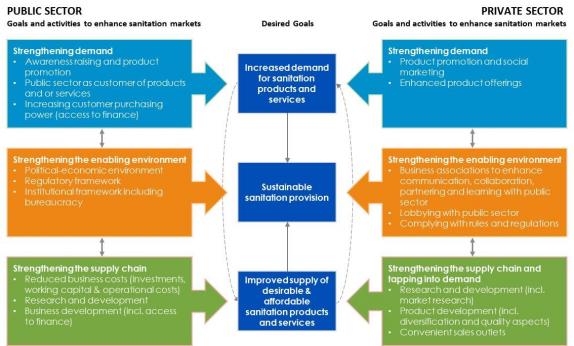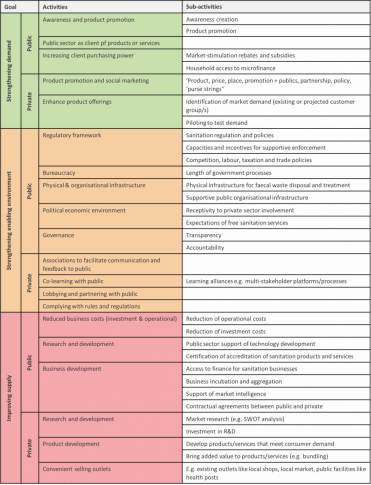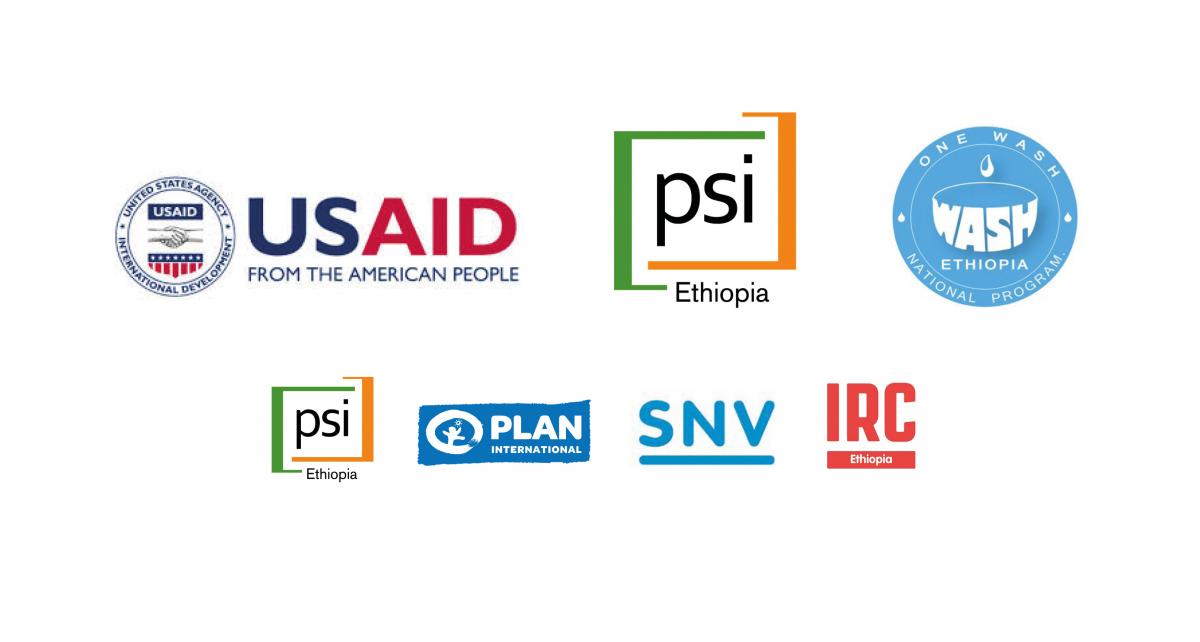Let's move beyond the conceptual chaos of 'public-private partnerships' and talk about what it really means.
Published on: 21/11/2017
In order to support the USAID-funded Transform WASH project in Ethiopia (https://www.ircwash.org/projects/usaid-transform-wash), I was asked to do a desk study on the concept of public-private partnerships (PPPs) to better understand how the public and private sector can collaborate in promoting improved sanitation.
After engaging with the concept of PPPs in different capacities over the last five years, I know that PPPs are widely analysed and applied across sectors and regions, but at times used carelessly because it is an approach favoured by policy makers, donors, researchers and practitioners. Yet, just claiming that your new project is a PPP doesn't really clarify much, does it?
So, in the study I specifically wanted to understand models or arrangements, not necessarily bounded by contractual agreements, in which the public and private directly or indirectly influence each other and/or collaborate in establishing, strengthening or scaling up sanitation businesses targeting sanitation products and services for households. Let's call this broader non-contractual way of working 'public-private collaboration'.
There is no better way to learn than from past experiences and then trying again, mixing lessons learnt from the past with innovative ideas. For the desk study, I gathered 57 examples of models from 11 countries where the public and private sectors have made an attempt to collaborate, either directly and bound by contractual agreements, or indirectly by influencing and supporting each other's efforts. The selected examples were identified by reviewing existing literature and secondary sources, including reports and websites of organisations operating in the WASH sector. The search was complemented by interviews with a selected group of WASH practitioners across the world.
In a second step, I categorised all the examples in the scan and developed a framework based on the different models (building on an earlier framework developed by Water for People). I then selected a number of lessons learnt from the scan and discussed their potential strengths and weaknesses relevant to the Ethiopian context. Categorising models is a nuanced task with room for interpretation and drawing sharp lines between them proved difficult. The reader may find examples that are identified as one type of model but which includes elements of other models as well.
The proposed framework (see Figure 1 and 2) aims to assist in systematically evaluating where in sanitation markets a model of public-private collaboration may be relevant and (potentially) successful. It can also be used to identify what key challenges need to be addressed in order to increase the potential of the chosen model of public-private collaboration. The framework starts from the notion that sustainable sanitation provision needs to address both demand and supply simultaneously (including easing finance constraints for both consumers and suppliers), and that the enabling environment will facilitate rather than deter activities aiming to strengthen the demand and supply.
The framework centres around three goals – strengthening demand, strengthening the enabling environment, and strengthening the supply chain – and lists a number of activities under each goal. The public and private sectors can either engage separately in the activities or collaborate with each other in order to influence and stimulate sanitation markets. Each activity has a list of identified sub-activities (see Figure 2). The framework is envisioned to (a) work as a diagnostic tool to analyse the viability of current sanitation business models and related government systems and capacities by identifying their respective strengths and weaknesses (e.g. knowledge and capacity gaps). Based on this analysis you can then (b) identify how and where in sanitation markets the public and private sectors may find opportunities to collaborate. Additionally, the framework will help you to understand where in existing sanitation markets the system and actors function well.
Figure 1 Proposed framework for understanding public-private collaboration in sanitation markets

Source: adapted from Water for People (2016) Strengthening public sector enabling environments to support sanitation enterprises: based on Water For People's experience in nine countries. Guidance Manual
Figure 2 Overview of activities and sub-activities of the framework

The most important next step is of course to let go of this theoretical level and put it into practice. An abstract framework does not do the job but can be useful in making sense of unstructured information, showcasing correlations or help you tick boxes. What I have learnt from this research is the following:
And, just a final remark I wanted to share with you before packing up my IRC identity and moving on to the next adventure. Aren't partnerships: truly about human relations, dialogue and trust? If so, how do we measure that and can a framework really help?
You can find the learning note here.
This is an ongoing series of blogs and publications by IRC under the USAID Transform WASH project. Please click here for all IRC’s work on this project.
USAID TRANSFORM WASH sets out to improve water, sanitation and hygiene (WASH) outcomes in Ethiopia by increasing access to and sustained use of a wide spectrum of affordable WASH products and services, with a focus on sanitation. It does so by transforming the market for low-cost, high quality WASH products and services: stimulating demand at community level, strengthening supply chains, and building the enabling environment for a vibrant private market.
USAID TRANSFORM WASH is a USAID-funded project implemented by PSI in collaboration with SNV, Plan International, and IRC. The consortium is working closely with government agencies including the Ministry of Health, the Ministry of Water, Irrigation and Electricity, the National WASH Coordination Office and regional governments.

At IRC we have strong opinions and we value honest and frank discussion, so you won't be surprised to hear that not all the opinions on this site represent our official policy.